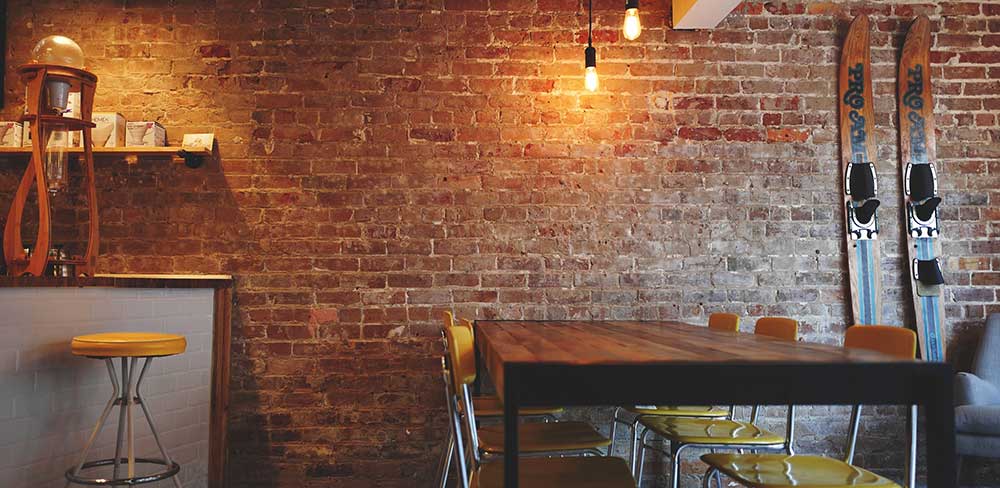
Bored with just normal paint? Good news: There’s a whole world of wall finishes to explore. With the myriad of wall finishes available on the market today, we have come up with this guide for our customers and readers.
Wallpaper
Wallpaper is comprised of textile, leather, metal, wood, silk and other natural materials, all of which can enhance interior design styles. Imagine jute covered walls in an Asian or beach inspired interior or oxidized copper paneling in an industrial or turn-of-the-century interior design. When paired with batting, another benefit of these materials is that they help reduce ambient noise between rooms.
Whether you’re papering a child’s room with an artist’s bespoke drawing or covering an accent wall with a vintage-inspired floral, there is something out there for every taste and budget. When planning a potential project, know that rooms with higher humidity, such as bathrooms and kitchens, are generally not advised for wallpaper.
Repeated moisture exposure can damage the finish or make the paper curl or pucker. However, it will depend on your home’s exact conditions and ventilation, as well as the product.
Basic application: Be sure to read manufacturer instructions first, as they may vary. In general, after prepping walls, you will cut paper lengths to fit the surface. Apply paste to the wall or paper, and affix, being sure to maintain the pattern’s repeat while also taking shrinkage and stretching into account. Then use a brush or rag to smooth the surface.
Tools needed: Primer, cutting tools, a generous flat surface for unrolling, paste, roller, wallpaper, and brush or rags.DIY Difficulty: “I would never take it on!” says Wannamaker. “But there are some people that are totally comfortable with it.” She says that you have to be very precise and mathematical in the application, so assess your comfort level before diving in.
Stone
Stone is simply the most luxurious natural material for walls and flooring. Made by slicing or splitting boulders and slabs of rock into thin squares and rectangles, stone has been used in home interiors for thousands of years. Perhaps even more than wood, stone denotes permanence, character and lasting elegance.
Its naturally cool, durable surface is ideal for warm climates and does not harbor dust or allergens. In cooler climates, stone can be cold and slippery and I have described the tapestry/wallpaper and wood paneling choices above that mitigate this characteristic.
Stone exists in an incredible range of colors and patterns with rare colors and patterns costing the most. Given that walls can be uneven as a tactile point of interest (which is more of a concern with flooring), shape takes on prominence. Pebbles with its organic roundness and dry-stone and free form walling in which granite, limestone or slate pieces are split on the face create a rugged, rocky look. For a flatter finish, stone can be split on all faces evenly to create a paved, tiled look.
Lime plaster
Lime plaster has been around since antiquity, with examples of its usage dating as far back as 7200 BC. Natural lime plaster is often comprised of hydrated lime (calcium hydroxide), water, and aggregates.
The wet plaster hardens into a limestone finish that’s durable as well as breathable, meaning moisture isn’t trapped in the wall. Natural lime plaster has mold or mildew resistance, improves indoor air quality, and is close to carbon neutral, making it a popular choice for green building projects. Lastly, “Venetian plaster is a name of a type of finish,” says Wannamaker, that’s typically associated with plasters that originated in Italy.
A lime plaster wall finish creates an unparalleled depth that is both rich and tactile. It’s available in a variety of colors and sheens, says Wannamaker, and it can go anywhere if sealed properly, including saunas, showers, and exteriors. “I would plaster everything,” she says. “It ages gracefully and improves over time.”
Basic application: This will depend on the product and the finished appearance you desire, but basic application involves traditional plastering techniques using a hawk and trowel, and applying thin coats.
Concrete veneer
In its basic application, concrete veneer imparts a more modern and industrial aesthetic, although it can also be tinted with color and applied with stencils for an artistic effect. At her shop, Wannamaker sells SkimStone, a hybridized cement coating that works for residential and commercial settings, as well as interior and exterior applications.
It’s durable (although not structural at all) and as a water-based product, meets LEED criteria. Wannamaker has used it on walls, floors, and counters. She says that if applied over a SkimStone Bonding Primer, it can also cover wood, laminate, and tile, as well as the old concrete it’s intended to cover. She has used it wherever the look of concrete is desired, including bathrooms and kitchens.
Basic application: The manufacturer recommends applying 2-3 very thin coats with a trowel, followed by several coats of Protective Sealer.
Tools needed: Depends on desired aesthetic, but might require a trowel, brush, sponge, or roller, as well as primer and sealer.
DIY Difficulty: It takes some finesse when applying to walls, as it’s drippy and messy. For that reason, Wannamaker generally prefers horizontal surfaces.

